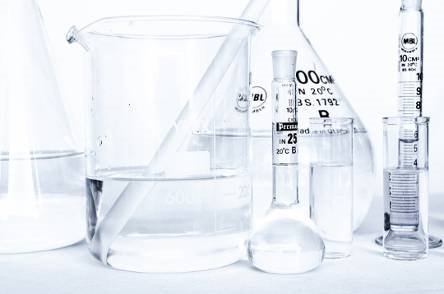Hydrophilic interaction liquid chromatography (HILIC), although not a new technique, is unfamiliar to many chromatographers. HILIC uses the same mobile phases and systems as the more common reversed-phase liquid chromatography (RPLC). However, it employs a polar stationary phase to separate potentially problematic polar analytes and retain charged compounds, including inorganic salts. The technique is gaining popularity, as polar analytes have become the focus of environmental monitoring and biopharmaceutical development. It is typically used when reversed-phase mode has shown insufficient separatory power. HILIC is highly compatible with mass spectrometry (MS), and is useful when using electrospray ionization (ESI)-MS.
How do HILIC columns work?
Chemists have a wide variety of reversed-phase columns and chemistries to choose from. However, if working with a compound that does not retain well on RPLC columns, HILIC is a useful option that requires minimal modification to the system or solvents.
The HILIC mechanism is driven by a thin layer of water that covers the surface of the stationary phase particles, creating a partition with the highly organic mobile phase. Polar compounds are retained by the water layer, as well as the stationary phase, by hydrogen bonding and electrostatic interactions.
In practical terms, HILIC columns are able to retain moderate to highly polar analytes. Elution occurs from least polar to most polar (the opposite to RPLC), and gradients run from highly organic to aqueous. Water is the strongest solvent in HILIC, and a higher buffer concentration (typically ammonium formate or ammonium acetate) increases solvent strength, improves peak shape, and can moderately change selectivity.
Ion exchange is often a secondary interaction mechanism on HILIC columns, as many polar stationary phases, including bare silica, are mildly acidic or basic. It can result in tailing and strong retention of either cationic or anionic compounds. A charge-neutral bonded phase is important when analyzing mixtures containing cationic, anionic, and neutral compounds. Column selection is critical during method development.
(1) Polar analytes can partition into and out of the water layer, with more polar analytes having a stronger interaction.
(2) Charged polar analytes can also undergo ion exchange with the silica surface.
Advantages of HILIC
As well as the ability to retain cations, anions, and polar neutrals in a single run, HILIC techniques offer alternative selectivity to RPLC. The highly organic mobile phase gives enhanced sensitivity with MS-compatible methods in both positive and negative modes.
HILIC columns can feature novel zwitterionic stationary phases, which offer superior retention and separation without the secondary ion exchange found on older stationary phases. Polyhydroxy fructan (OH5) stationary phases are also available, which offer alternative selectivity to zwitterionic phases for polar compounds.
The figure below shows the Agilent InfinityLab Poroshell 120 HILIC (bare silica), Agilent InfinityLab Poroshell 120 HILIC-Z (zwitterionic), and Agilent InfinityLab Poroshell 120 HILIC-OH5 (polyhydroxy fructan) columns displaying orthogonal selectivity for polar analyte separations. This separation of water-soluble vitamins demonstrates selectivity differences across HILIC phases using the same method conditions. Separations can be optimized on each column by altering the method conditions.
The changes in elution order highlight the differences in selectivity between the three columns, and show complementary selectivity.
HILIC method development
During method development, parameters should be adjusted one-by-one, to determine which factors are required for the desired separation. Parameters to be considered include:
• Buffer concentration – a high buffer concentration increases the solvent strength, which can improve peak shape and slightly change selectivity. Higher buffer concentration can cause ion suppression in LC/MS.
• Mobile phase pH – this changes the charge state of compounds and their polarity. It can determine whether the ion exchange retention mechanism can take place, and to what extent.
• Column temperature – higher temperatures can give superior peak shape, while decreasing temperature can cause longer retention of the analytes and improve selectivity.
The InfinityLab solution
To enable higher efficiency and reproducibility for chromatographic separations, InfinityLab Poroshell 120 columns utilize superficially porous particles for high resolution separations. In contrast to using traditional totally porous particles, InfinityLab Poroshell 120 columns ensure smaller particle size distributions. This enables more uniform packing of column particles, and short analyte diffusion paths in and out of the porous layer. Three of these columns are perfectly designed for HILIC separation: InfinityLab Poroshell 120 HILIC, InfinityLab Poroshell 120 HILIC-Z, and InfinityLab Poroshell 120 HILIC-OH5.
The new Agilent InfinityLab deactivator additive now enables users to reduce the interactions between sensitive analytes and the metal in their instrument, eliminating a major obstacle in metabolomics and polar pesticide analysis. It is a unique mobile phase additive that increases the overall sensitivity of the instrument by reducing the amount of analyte interaction with the metal in the HPLC, UHPLC, or LC/MS system.
Ongoing innovation
The addition of the deactivator additive to the InfinityLab toolbox is another step along the way to optimizing separation of polar analytes by HILIC columns. The creation of superficially porous particles for use in HILIC columns enables users to retain highly charged compounds (including inorganic salts) with the HILIC-Z stationary phase. Polar compounds with alternate selectivity can be separated with the HILIC-OH5 phase.
In contrast to other columns, HILIC can be used alongside a C18 column (on which polar analytes are usually poorly separated) for complementary selectivity. HILIC can separate these polar compounds without ion pairing or derivatization, therefore reducing laboratory costs and improving throughput.
For more information on HILIC columns, download the flyer here or visit https://www.agilent.com/en/promotions/hilic-columns.
For Research Use Only. Not for use in diagnostic procedures.
Keywords; HILIC, InfinityLab, chromatography, HPLC, polar analytes



